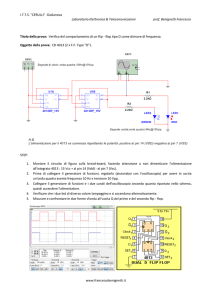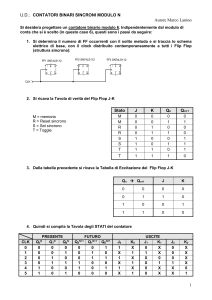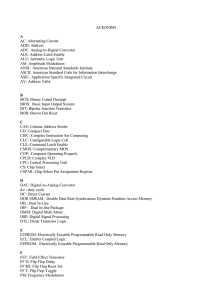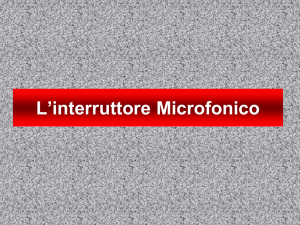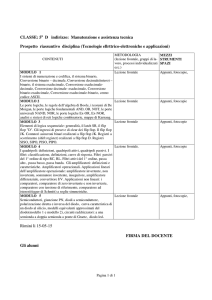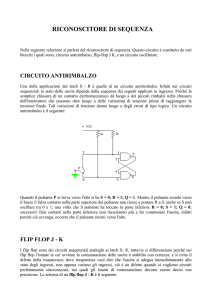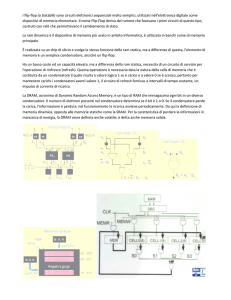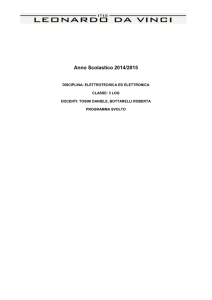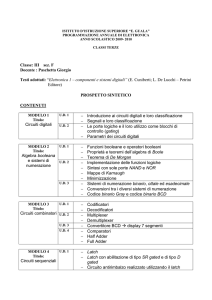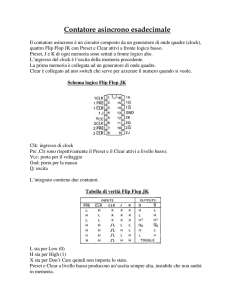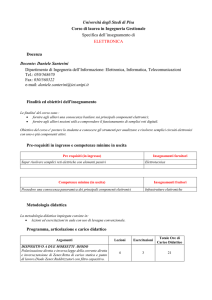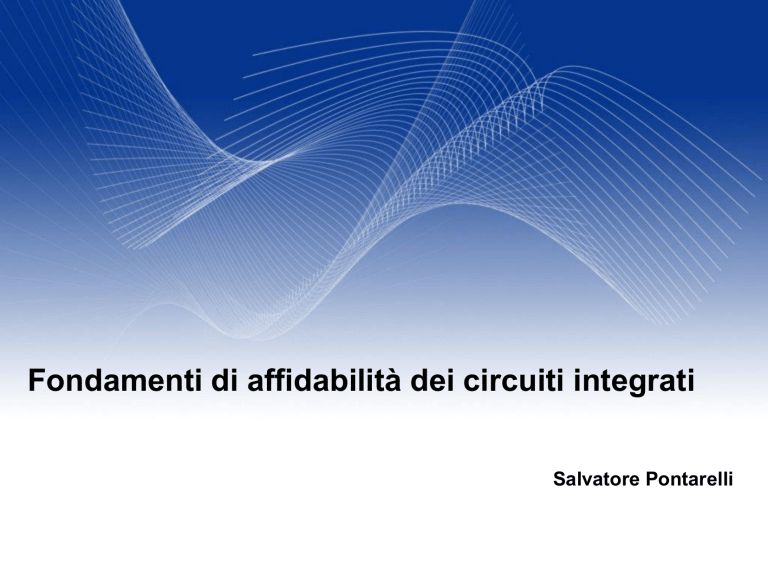
Fondamenti di affidabilità dei circuiti integrati
Salvatore Pontarelli
Effetti dello scaling sull'affidabilità
Affidabilità di un
singolo dispositivo
Affidabilità dell'intero
sistema
Affidabilità minima
richiesta
2
Definizioni
Fault-tolerance: Il sistema può continuare a funzionare
correttamente anche in presenza di guasti
hardware/software
guasto: un difetto o una modifica dello stato fisico di un
componente
Errore: è la manifestazione di un guasto
Failure: una situatione dove l'errore provoca il non
corretto funzionamento del sistema
3
Definizioni
Affidabilità (Reliability) R (t) – è la probabilità che il
sistema funzioni fino al tempo t
Note: 0.97 = 0.9999999
Disponibilità (Availability) A (t) – è la probabilità che il
sistema funzioni all'istante di tempo t
Performability P (L, t) – probabilità che il sistema avrà un
livello di performance L all'istante t
Maintainability M (t) – probabilità che un sistema guasto
venga riparato all'istante t
4
Ambienti di lavoro
Ambiente terrestre
Spazio
Per molti settori c’è richiesta
di circuiti ad alta affidabilità:
applicazioni legate alla
sicurezza, al campo medico,
al controllo del traffico aereo
Richiede circuiti ad alta
affidabilità
Nei circuiti realizzati con
tecnologie avanzate aumenta
la probabilità di guasto (ad es.
a causa dei neutroni
atmosferici)
I circuiti sono sottoposti a
stress meccanici e termici
Le radiazioni presenti nello
spazio possono provocare
guasti
5
Guasti
Si dividono in:
Temporanei
Nell’ambiente spaziale:
Single Event Effect dovuti alle
radiazioni ionizzanti
Nell’ambiente terrestre:
Single Event Effect dovuti ai
neutroni atmosferici
Permanenti
Nell’ambiente spaziale:
l’accumulo di radiazioni nei
dispositivi può comprometterne il
funzionamento
Nell’ambiente terrestre:
l’invecchiamento dei dispositivi è
più rapido per le tecnologie di
ultima generazione
6
Reliability
Failure Rate
Infant
Mortality
Useful
Operating
Life
Wear
Out
Time
7
Modelli di guasto
sebbene le cause fisiche dei guasti sono molteplici, per il
test dei circuiti integrati si utilizzano dei modelli di guasto.
transistor level: transistor stuck-open, stuck-close
gate level: transistor stuck-at-0, stuck-at-1
8
Testing
Testing is one of the most expensive parts of chips
Logic verification accounts for > 50% of design effort for
many chips
Debug time after fabrication has enormous opportunity
cost
Shipping defective parts can sink a company
Example: Intel FDIV bug
Logic error not caught until > 1M units shipped
Recall cost $450M (!!!)
9
Observability & Controllability
Observability: ease of observing a node by
watching external output pins of the chip
Controllability: ease of forcing a node to 0 or 1
by driving input pins of the chip
Combinational logic is usually easy to observe
and control
Finite state machines can be very difficult,
requiring many cycles to enter desired state
Especially if state transition diagram is not known
to the test engineer
10
Test Pattern Generation
Manufacturing test ideally would check every
node in the circuit to prove it is not stuck.
Apply the smallest sequence of test vectors
necessary to prove each node is not stuck.
Good observability and controllability reduces
number of test vectors required for
manufacturing test.
Reduces the cost of testing
Motivates design-for-test
11
Test Example
SA1
A3
A2
A1
A0
n1
n2
n3
Y
SA0
{0110}
{1110}
{1010}
{1110}
{0100}
{0110}
{0110}
{0111}
{1110}{0110}
{0110}
{0100}
{0101}
{0110}
{0110}
{1110}
A3
A2
A1
n1
Y
n2
n3
A0
Minimum set: {0100, 0101, 0110, 0111, 1010,
1110}
12
Design for Test
Design the chip to increase observability and
controllability
If each register could be observed and
controlled, test problem reduces to testing
combinational logic between registers.
Better yet, logic blocks could enter test mode
where they generate test patterns and report the
results automatically.
13
Scan
CLK
Convert each flip-flop to a scan register
Only costs one extra multiplexer
Flop
SCAN
SI
D
Q
Normal mode: flip-flops behave as usual
Scan mode: flip-flops behave as shift register
Flop
Flop
Flop
Flop
Flop
Logic
Cloud
Logic
Cloud
Flop
Flop
Flop
Flop
outputs
Flop
inputs
Flop
Contents of flops
can be scanned
out and new
values scanned
in
Flop
scan-in
scanout
14
Built-in Self-test
Built-in self-test lets blocks test themselves
Generate pseudo-random inputs to comb. logic
Combine outputs into a syndrome
With high probability, block is fault-free if it
produces the expected syndrome
15
PRSG
Linear Feedback Shift Register
Shift register with input taken from XOR of state
Pseudo-Random Sequence Generator
D
Q[1]
D
Flop
Q[0]
Flop
D
Flop
CLK
Q[2]
Step
Q
0
111
1
110
2
101
3
010
4
100
5
001
6
011
7
111 (repeats)
16
BILBO
Built-in Logic Block Observer
Combine scan with PRSG & signature analysis
D[0]
D[1]
D[2]
Q[0]
0
PRSG
Logic
Cloud
Flop
1
Flop
SI
Flop
C[0]
C[1]
Q[2] / SO
Q[1]
Signature
Analyzer
MODE
Scan
Test
Reset
Normal
C[1]
0
0
1
1
C[0]
0
1
0
1
17
Boundary Scan
Testing boards is also difficult
Need to verify solder joints are good
Drive a pin to 0, then to 1
Check that all connected pins get the values
Through-hold boards used “bed of nails”
SMT and BGA boards cannot easily contact pins
Build capability of observing and controlling pins
into each chip to make board test easier
18
Boundary Scan Example
PackageInterconnect
CHIP B
CHIP C
Serial Data Out
CHIP A
CHIP D
IO pad and Boundary Scan
Cell
Serial Data In
Chips with internal scan chains can access the chains through
boundary scan for unified test strategy.
19

